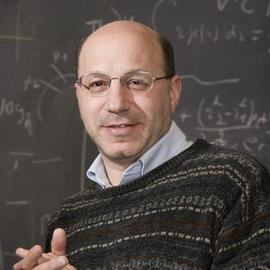
Free and open to the public
Reception prior to the seminar: 4:45pm - 5:15pm
Bldg. 530 Lobby
Lecture begins 5:15pm
Dynamics in Flows with (Reasonably) Simple Geometries: (I) Fluid-Driven Fracture and (ii) Trapping of Bubbles in Stagnation Point Flows
Fluid mechanics offers challenges at all Reynolds numbers. In this talk, I describe one problem where the Reynolds number is small but elasticity of a surrounding matrix is important and a second problem where the Reynolds number is modest (typically a few hundred) but we identify new dynamical features that influence both single- and multi-phase flows. The low Reynolds number flow problem we consider is fluid-driven fracture of an elastic matrix, which is inspired by the rapid development of hydraulic fracturing technology in the oil and gas industry. We present laboratory-scale experimental models and scaling analyses to describe both the growth of the crack and the backflow when the applied pressure is released. Second we consider single- and multi-phase flow in a T-junction, which is perhaps the most common element in many piping systems. In this example, the flows are laminar but have high Reynolds numbers, typically Re=100-1000. It seems obvious that any particles in the fluid that enter the T-junction will leave following the one of the two main flow channels. Nevertheless, we report experiments that document that bubbles and other low density objects can be trapped at the bifurcation. The trapping leads to the steady accumulation of bubbles that can form stable chain-like aggregates in the presence of surfactants, or give rise to a growth due to coalescence. Our three-dimensional numerical simulations rationalize the mechanism behind this phenomenon.
Dr. Howard A. Stone is the Donald R. Dixon ’69 and Elizabeth W. Dixon Professor in Mechanical and Aerospace Engineering at Princeton University. Stone received the Bachelor of Science degree in Chemical Engineering from the UC Davis in 1982 and the PhD in Chemical Engineering from Caltech in 1988. In 1989 Stone joined the faculty of the School of Engineering and Applied Sciences at Harvard University, where he eventually became the Vicky Joseph Professor of Engineering and Applied Mathematics. In July 2009 Stone moved to Princeton University. In 2008 he was the first recipient of the G.K. Batchelor Prize in Fluid Dynamics and in 2016 he received the APS Fluid Dynamics Prize. He was elected to the National Academy of Engineering in 2009, the American Academy of Arts and Sciences in 2011, and the National Academy of Sciences in 2014.


